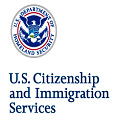 |
| |
April
2013 Edition
|
|
| |

| Preparing
for a Background Check
Are
you an employer flipping through applications preparing
to make a new hire for your current job opening? If so,
not only will you need to look at the details on the papers;
where they've previously worked, for how long, previous
job titles and duties, references listed etc., but you will
also need to do an accurate and thorough background check.
It
may seem like an easy task; just give your background screening
company your applicant's name, date of birth, and social
security number and let them do the rest! Unfortunately,
it's not that easy and if you really want your results to
be accurate, then you should properly prepare for your request
to be sent. First, you should always get a copy of your
applicant's state ID, drivers license, SSN card, or any
other form of legal documentation. This will show their
full, legal name which is very important! Don't think that
because he put "Bill" on his application that that's how
it should be ran for his criminal background. If you dig
deeper, his legal name is most likely "William". Or maybe
"Anne" is actually "Henrietta's" middle name and
she chooses to go by it instead. She even puts it on her
professional paperwork such as job applications. If you
search "Bill" instead of "William" or "Anne" instead of
"Henrietta" there is a large chance you will not get the
results that you need for your applicant. This is a common
mistake that employers unknowingly make on a regular basis.
Most criminal court searches are based on name and DOB.
Court records are public information and they do not list
SSN's for security reasons.
Secondly,
do not guess! If you are unable to obtain legal forms from
your applicant per company policy and cannot read the application
clearly, contact him/her for the information that you need.
You may still only be taking their word for it, but at least
you have gone that extra step in assuring your screening
process will be as accurate as possible. Another huge mistake
in the background screening process is when employers guess
that the DOB for example, says "01/18/1959" when it is actually
"01/13/1959". This is also true for the spelling of the
applicant's name. Just because it is close doesn't mean
it will get caught. If this person has a record, it will
be under their correct date of birth and spelling of their
name, not what you may have guessed it to be.
So
as an employer making important decisions on hiring, please
keep these details in mind. These simple, avoidable mistakes
could result in you hiring a felon who does not belong in
your executive opening.

Sarah Morber
MBI Worldwide
|
|
Inside
This Issue:
Human
Resource Articles of Interest:
Background
Screening Articles:
|
HUMAN
RESOURCE ARTICLES OF INTEREST
|
 Rethinking
HR - KPMG Report Rethinking
HR - KPMG Report
A
KPMG International study, Rethinking Human Resources
in a Changing World, reported that 81% of respondents
say that putting in place the most effective talent management
strategy will be key to competitive success. Six in ten
believe that HR will grow in strategic importance. At
the same time, just 17% maintain that HR does a good job
of demonstrating its value to the business, and only 15
% see HR as currently providing insightful and predictive
workforce analytics.
Meanwhile,
the forces of globalization, talent constraints and new
technology are driving rapid change to the HR function.
Fifty-five percent of survey respondents believe the metrics
that define the success in HR today will fundamentally
change over the next 3 years. The study examines
the nature of the challenges facing the HR function and
its future direction.
The
report's main findings include the following: HR is struggling
with the challenges of managing a global, flexible workforce.
One in four respondents say that HR at their company excels
at core issues such as sourcing and retaining key talent
globally or supporting a virtual and flexible workforce.
Only 24 percent feel that their HR function proficiently
supports their company's globalization strategies. While
63 percent of respondents feel that HR functions are likely
to become more globally uniform in the next 3 years, survey
participants highlighted the need to find a balance between
developing globally consistent strategies and local customization
geared to individual markets.
Read
more
|
|
 Successful
Employees Require a Solid Start Successful
Employees Require a Solid Start
Michelin
doesn't hire employees simply to fill open positions. The
end game is to develop people for long and successful careers
with the company. Sherie Burdett, explains "We believe that
nurturing our workforce -- from the beginning -- through
programs that help them become engaged in their careers
contributes to the overall success of the company," explains
Burdett, onboarding manager for Michelin North America.
"When
engaged employees work with passion and feel a profound
connection with the company, they drive innovation and help
move the organization forward," she adds. Michelin's onboarding
process includes pairing new recruits with "ambassadors."
The ambassador's role is to ease the new employee's transition
into the workplace by assisting the recruit in understanding
his or her specific work area and the company culture, and
by serving as an advocate for Michelin.
The
company's onboarding effort doesn't end there, however.
Indeed, the process consists of what Burdett describes as
five "streams": 1. Pre-arrival 2. First Days 3. Welcome
to This means that it is very important for companies
to get off on the right foot with new employees.,"
Department 4. A Better Way to Start 5. Two-way assessment.
"Each
stream is designed to onboard the employee as quickly, efficiently,
thoroughly and positively as possible," explains Burdett.
Such
early intervention is important for companies who want to
keep good employees for the long-term because "Research
shows that more than half of all turnover happens during
the first few years of employment.
Read
more
|
BACKGROUND
SCREENING NEWS |
|  Risky Business
People: Study Finds 1 in 8 Workers Bring Potential Peril
to Their Company Risky Business
People: Study Finds 1 in 8 Workers Bring Potential Peril
to Their Company
Organizations
need to recognize the advantages and disadvantages of behavioral
risk of all employees. Doing so allows an organization to
manage risk in a constructive way, according to a study
published by SHL, an Atlanta-based talent management company.
The study claims 1 in 8 managers and professionals globally
represent a high risk to their companies. The risk comes
from lower-quality decision-making and poorer communication.
Moving up the corporate ladder shows a decrease in risk
level: 1 in 15 executives pose a high risk for their companies.
Conversely, 1 in 7 lower-level employees, such as team leaders
and individual contributors, provide the highest potential
for risky behavior. Finally, 1 in 8 frontline staff represent
a high risk to their companies because of counterproductive
behaviors, such as lower compliance and attention to detail,
less of a commitment to a company and reluctance to working
with a team. These counterproductive behaviors can lead
to more errors in the workplace or damage a brand's name
through poor customer service. SHL recommends businesses
commit to enforcing ethical standards and developing effective
channels for employees to comfortably communicate ethical
infractions to their superiors.
Read more |
|
 Navigating
the U.S. Employment-based Immigration System Navigating
the U.S. Employment-based Immigration System
ACIP
and SHRM released its 2013 primer, "Navigating the U.S.
Employment-based Immigration System," available online at
http://www.acip.com/2013-primer-flipbook .
In
it, you will find information about how the U.S. economy
can be strengthened and American jobs created through reform
of the employment-based immigration system, including:
-
Employment-based green cards;
-
H-1B and L-1 visas;
-
Electronic employment verification / E-Verify;
-
Processing efficiencies / Trusted Employer;
-
And more, including how America measures up in the global
competition for top talent, a history of legislation and
glossary of key terms.
View
the primer here or request a hard copy from at 703-535-6466
|
|
|
|
 |

 Rethinking
HR - KPMG Report
Rethinking
HR - KPMG Report
 Successful
Employees Require a Solid Start
Successful
Employees Require a Solid Start  Risky Business
People: Study Finds 1 in 8 Workers Bring Potential Peril
to Their Company
Risky Business
People: Study Finds 1 in 8 Workers Bring Potential Peril
to Their Company  Navigating
the U.S. Employment-based Immigration System
Navigating
the U.S. Employment-based Immigration System